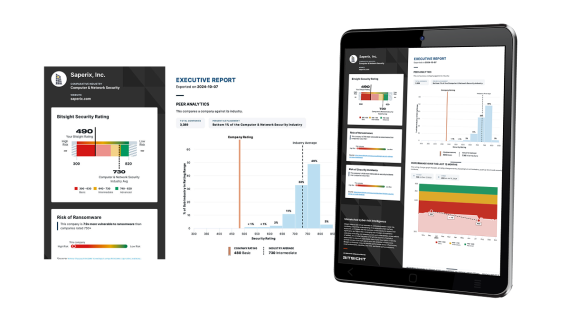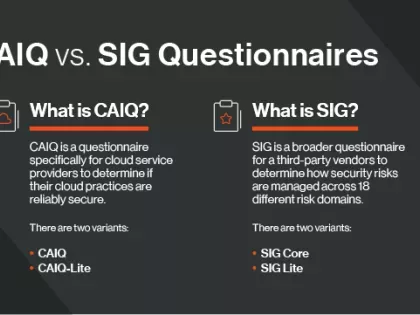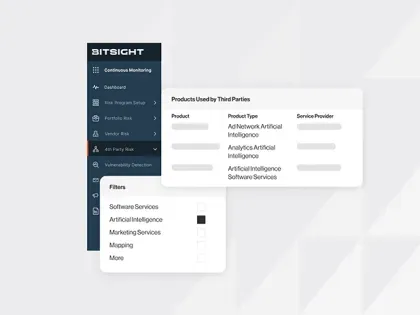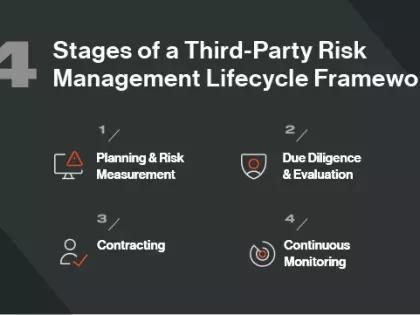New! The Security Ratings report is now the Executive Report. Request your report to see enhanced analysis such as your rating, likelihood of ransomware incidents, and likelihood of data breach incidents.
5 Reasons To Uncover Third-Party Risk With Security Ratings
Tags:
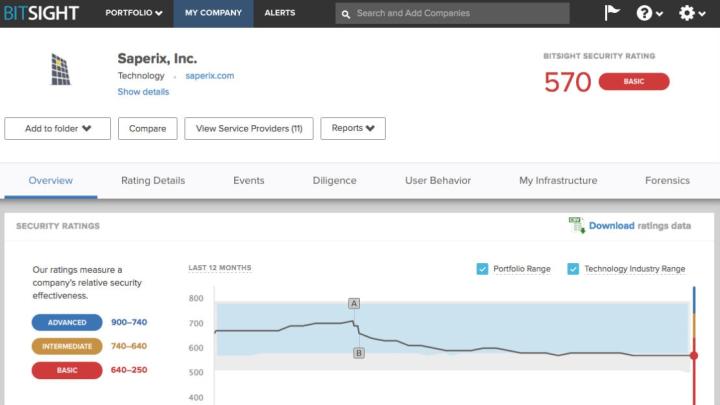
Any seasoned vendor risk manager will tell you that determining whether a particular third party’s cybersecurity is up to your standards—and deciding how much risk to assume through your relations with your vendors—is not a simple task. Even so, there are technologies available that make handling vendor risk easier—and one of those is Bitsight Security Ratings.
Similar to a consumer credit score, Security Ratings assign a score ranging from 250 to 900—updated daily—to an organization’s cybersecurity posture. Below are five ways you and your organization can benefit from utilizing this rating.
1. You get a continuously updated view of your vendors’ security risk.
You, of course, want to know how each of your vendors perform over time with regard to cybersecurity. But traditional vendor risk management tactics only provide you with a snapshot of their performance at the exact moment the test or survey was completed. The fact of the matter is, if you’re continuously sharing data with your vendor then your vendor risk management process needs to include continuous monitoring.
2. You’ll potentially avoid the reputational impact from a cybersecurity breach.
The cost of a data breach is certainly a concern for organizations with vendors, but reputational harm can also deal a major blow. It’s tough to gain the trust of your partners, constituents, and customers; that same trust is also very easy to lose. For example, if a customer's payment card information is compromised, they’re not going to care who was breached—you or your vendor. They’re going to care that they now have to consider credit monitoring. Using Security Ratings can help you avoid this situation by giving you a better way to select top-of-the-line vendors.
3. You'll have a baseline for discussing acceptable risk with vendors.
Because Security Ratings are akin to consumer credit scores, they’re easily understood. This makes starting a conversation about cybersecurity with your vendors much easier. A dip in their ratings or their SPF and DKIM grades is a clear signal to both parties that action needs to be taken.
4. You'll optimize your in-house resources with cost-effective Security Ratings.
Very few information security teams feel they have all the resources they need to properly assess their vendors’ cybersecurity performance. On top of that, most have a difficult time determining which vendor matters are the most pressing. Security Ratings make it easy for infosec teams to see the low-performing areas of each vendor so they can triage and use their resources optimally.
5. Your onboarding process will become easier.
Security Ratings are certainly helpful during the vendor selection phase, but their use extends beyond that. Once you’ve decided to work with a third party, Security Ratings can help determine what information that vendor should have access to. For example, if a vendor who is critical to the success of your organization has a low rating, that may affect the amount or level of data you’ll share with them, or initiate a process to help them improve their rating.
Want to know your organization’s Security Rating?
Register for a free demo of Bitsight to find out your organization’s Security Rating, and how it stacks up against those of your competitors.
